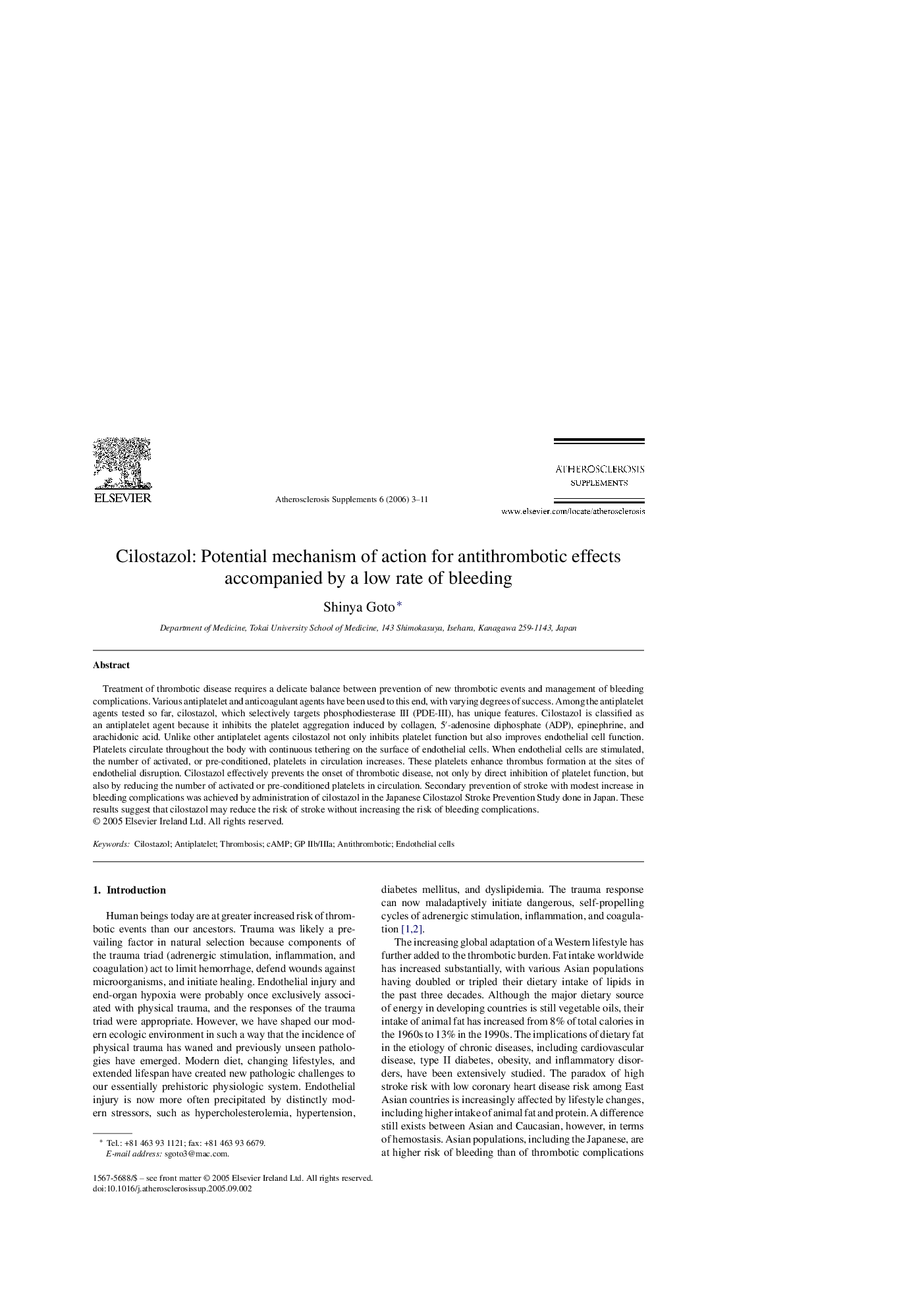| Article ID | Journal | Published Year | Pages | File Type |
|---|---|---|---|---|
| 9159849 | Atherosclerosis Supplements | 2005 | 9 Pages |
Abstract
Treatment of thrombotic disease requires a delicate balance between prevention of new thrombotic events and management of bleeding complications. Various antiplatelet and anticoagulant agents have been used to this end, with varying degrees of success. Among the antiplatelet agents tested so far, cilostazol, which selectively targets phosphodiesterase III (PDE-III), has unique features. Cilostazol is classified as an antiplatelet agent because it inhibits the platelet aggregation induced by collagen, 5â²-adenosine diphosphate (ADP), epinephrine, and arachidonic acid. Unlike other antiplatelet agents cilostazol not only inhibits platelet function but also improves endothelial cell function. Platelets circulate throughout the body with continuous tethering on the surface of endothelial cells. When endothelial cells are stimulated, the number of activated, or pre-conditioned, platelets in circulation increases. These platelets enhance thrombus formation at the sites of endothelial disruption. Cilostazol effectively prevents the onset of thrombotic disease, not only by direct inhibition of platelet function, but also by reducing the number of activated or pre-conditioned platelets in circulation. Secondary prevention of stroke with modest increase in bleeding complications was achieved by administration of cilostazol in the Japanese Cilostazol Stroke Prevention Study done in Japan. These results suggest that cilostazol may reduce the risk of stroke without increasing the risk of bleeding complications.
Related Topics
Health Sciences
Medicine and Dentistry
Cardiology and Cardiovascular Medicine
Authors
Shinya Goto,
